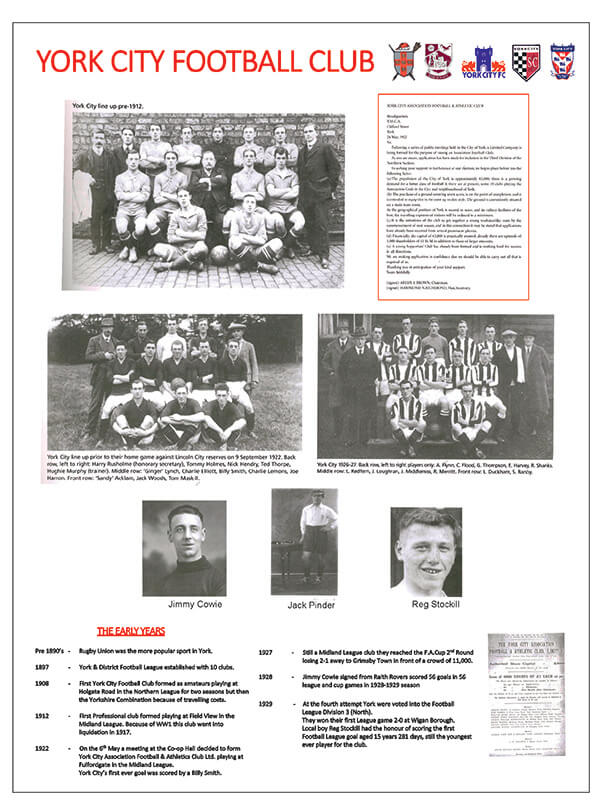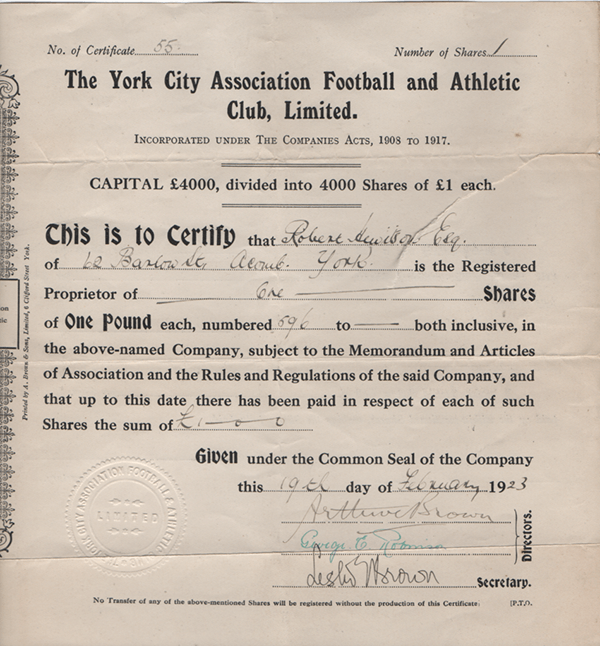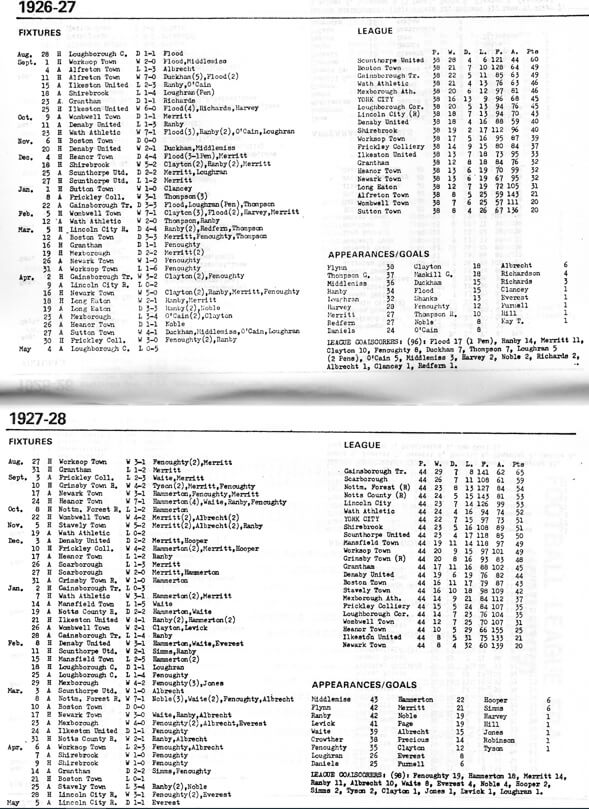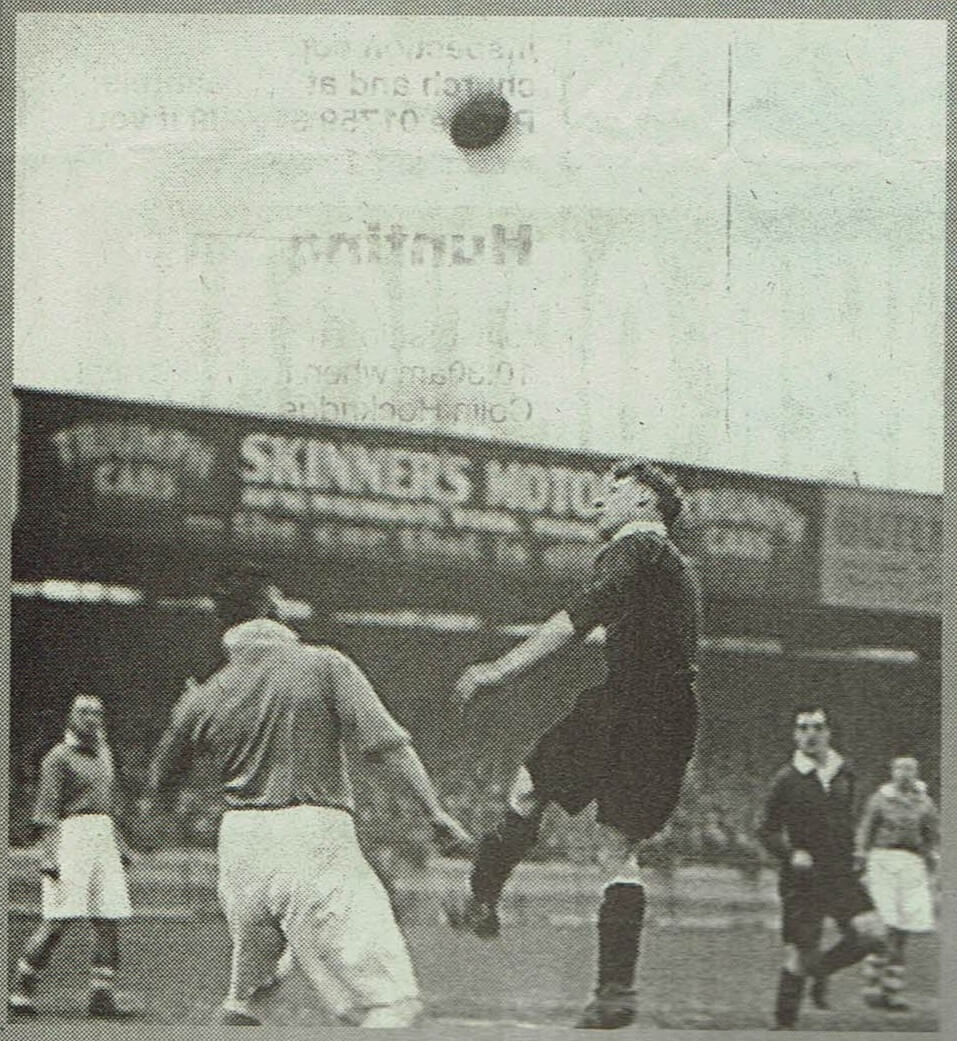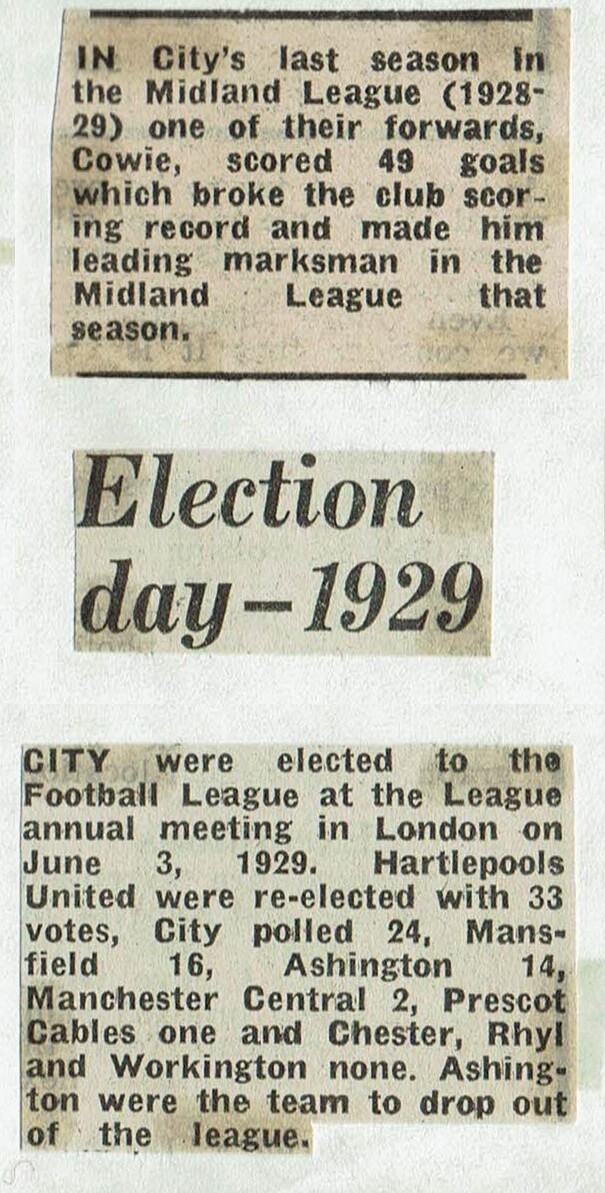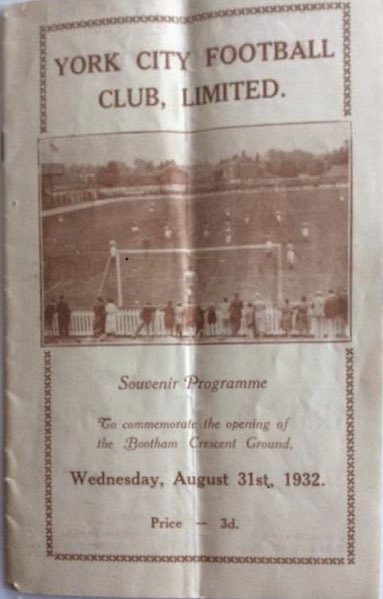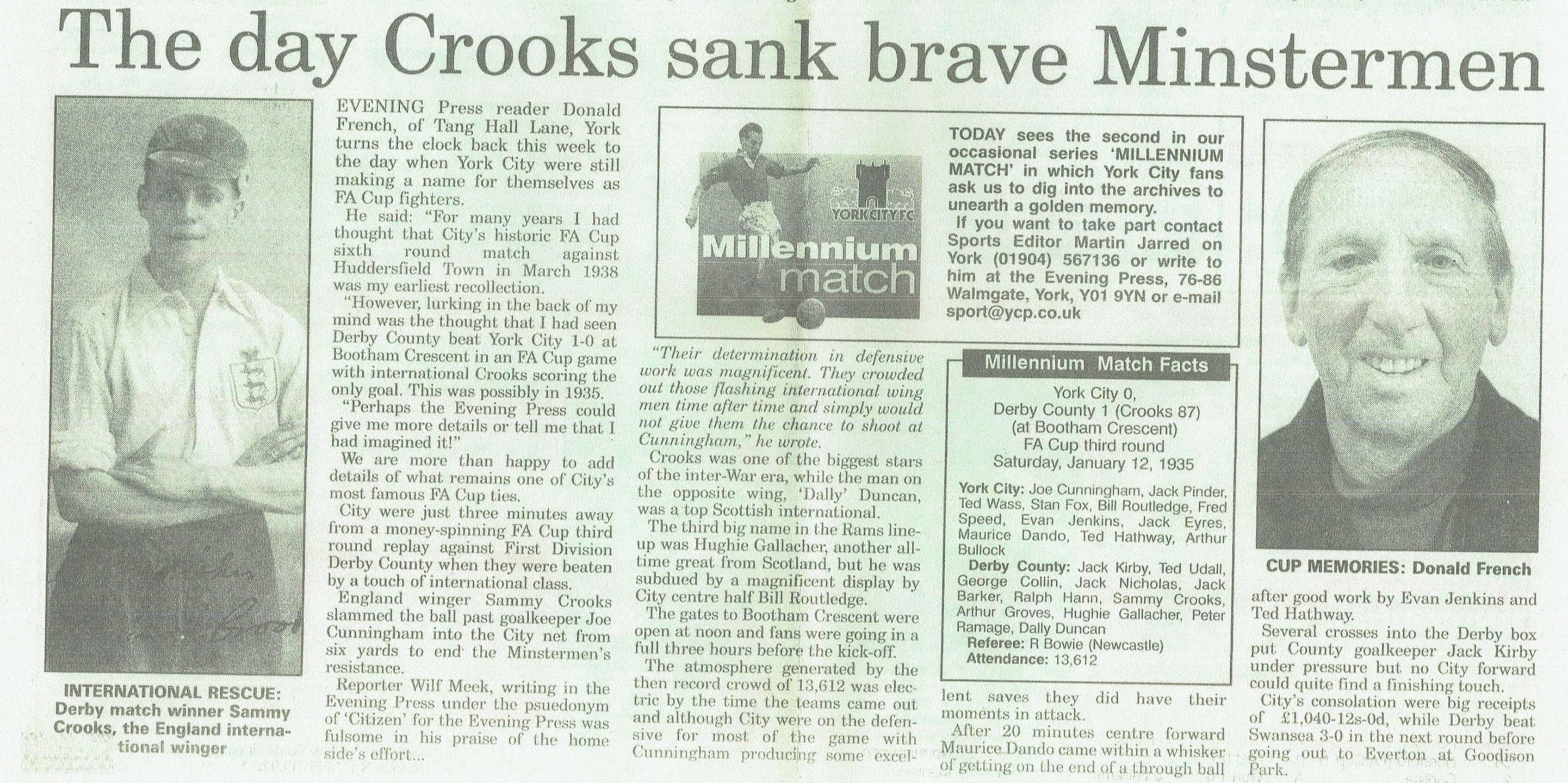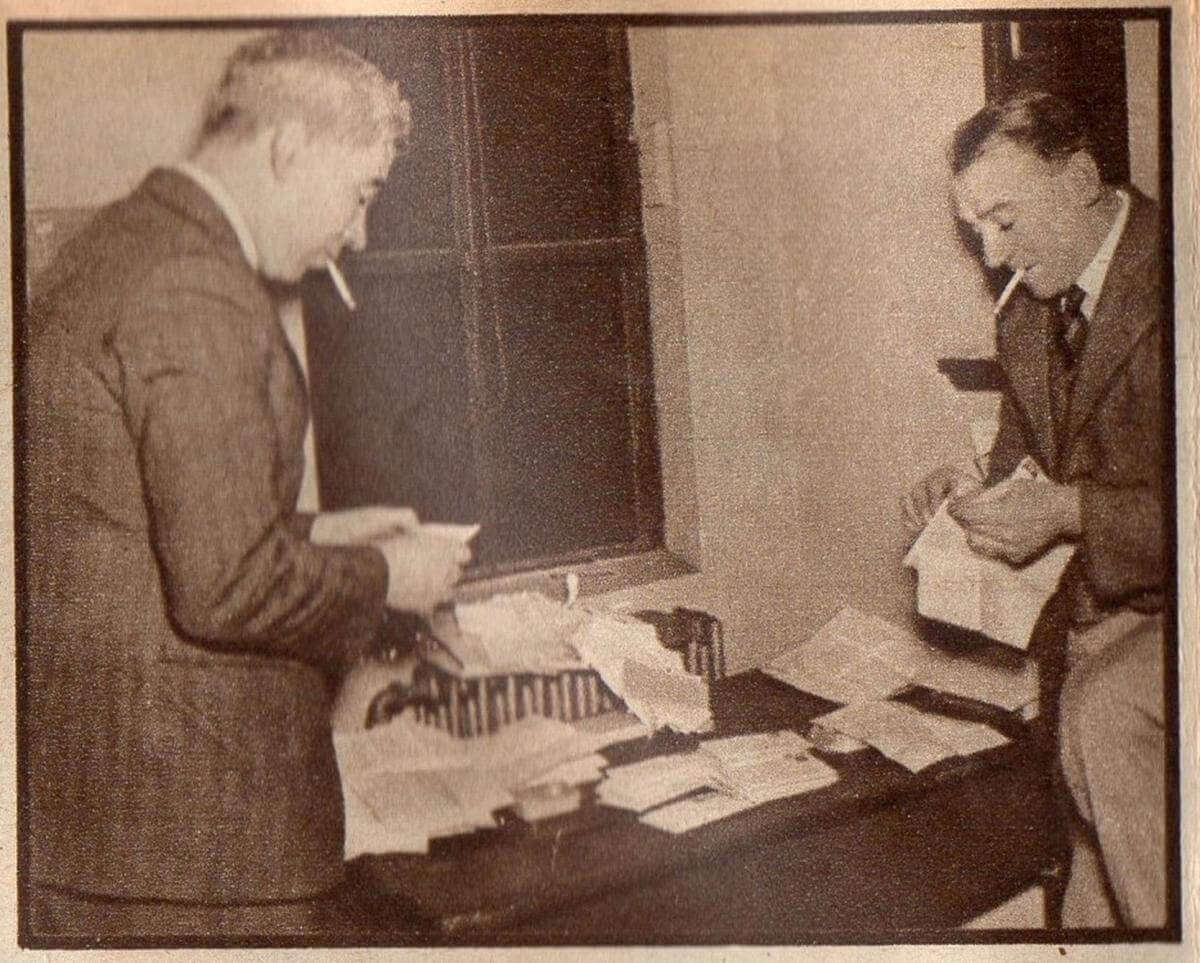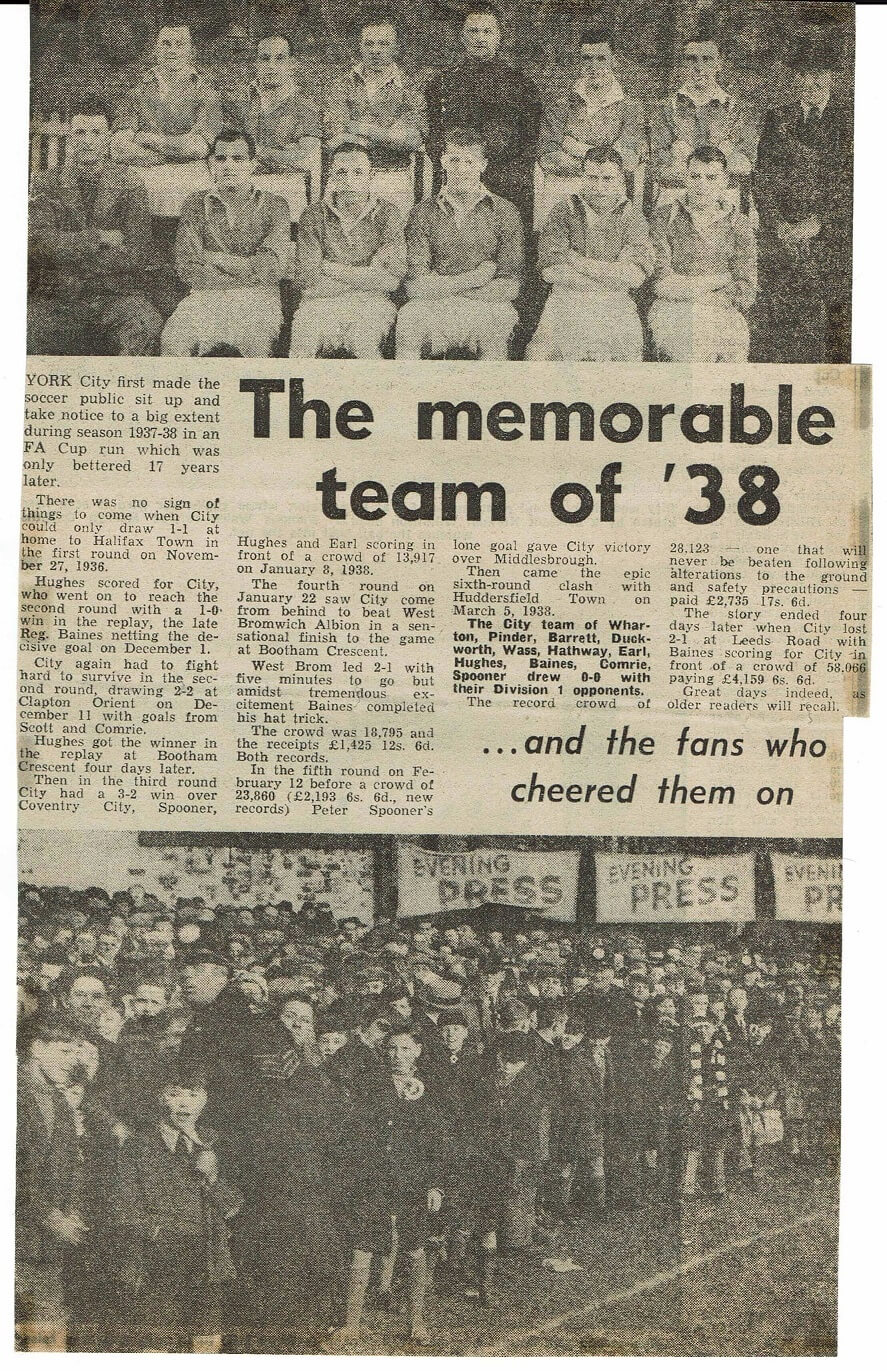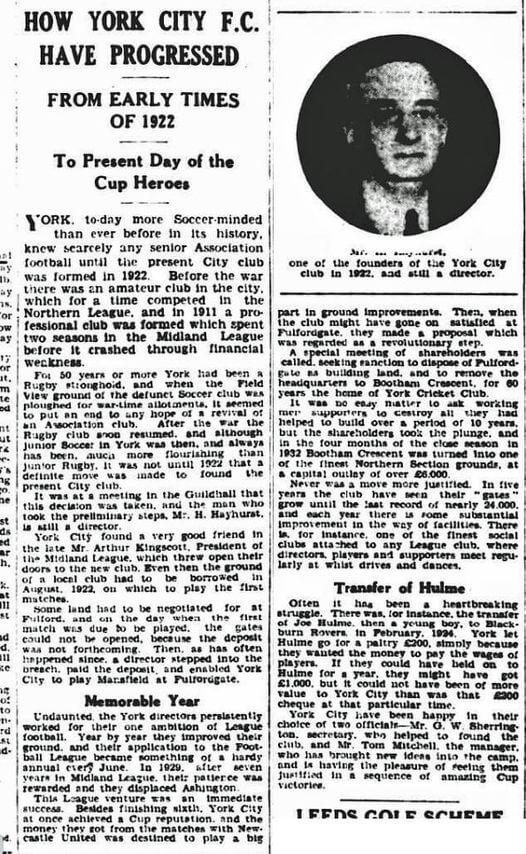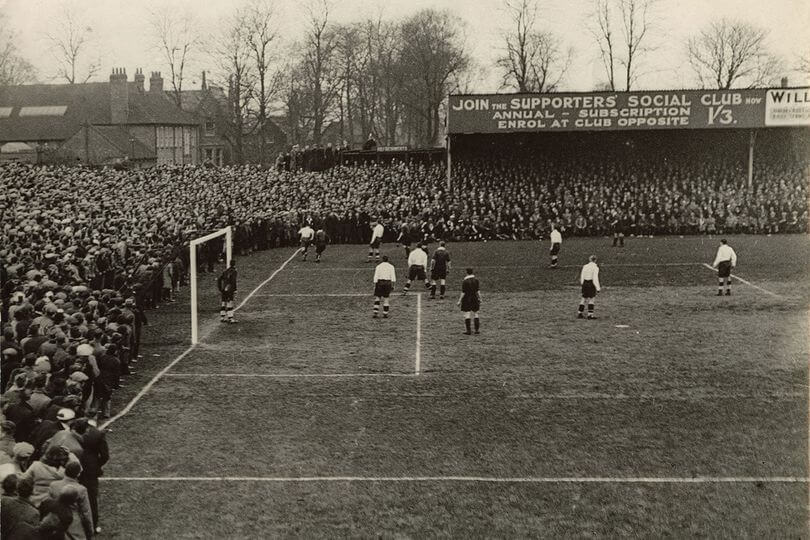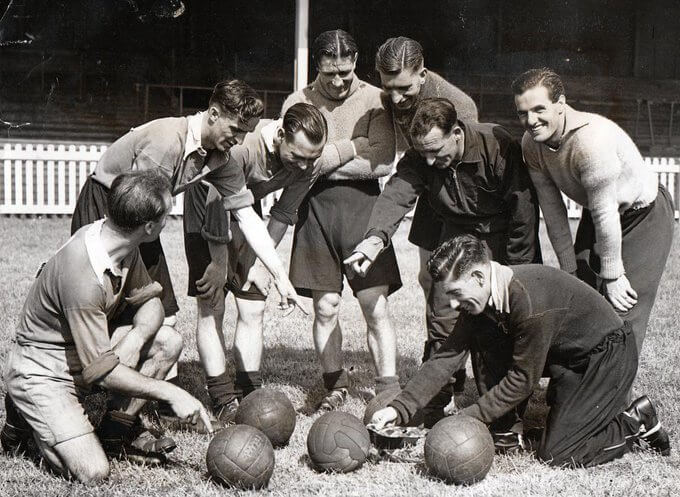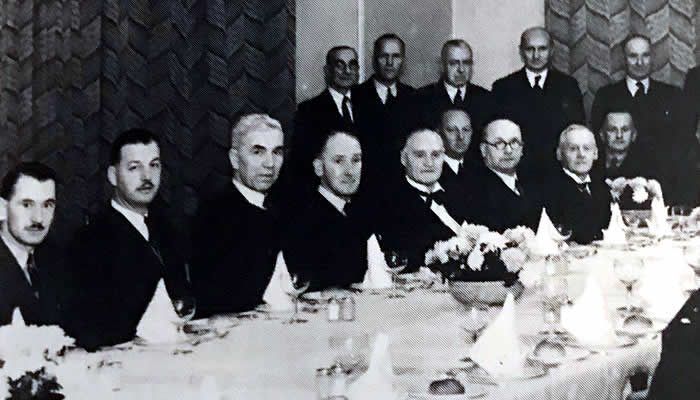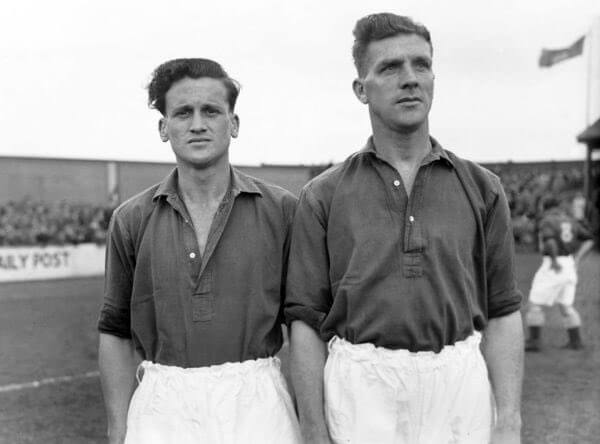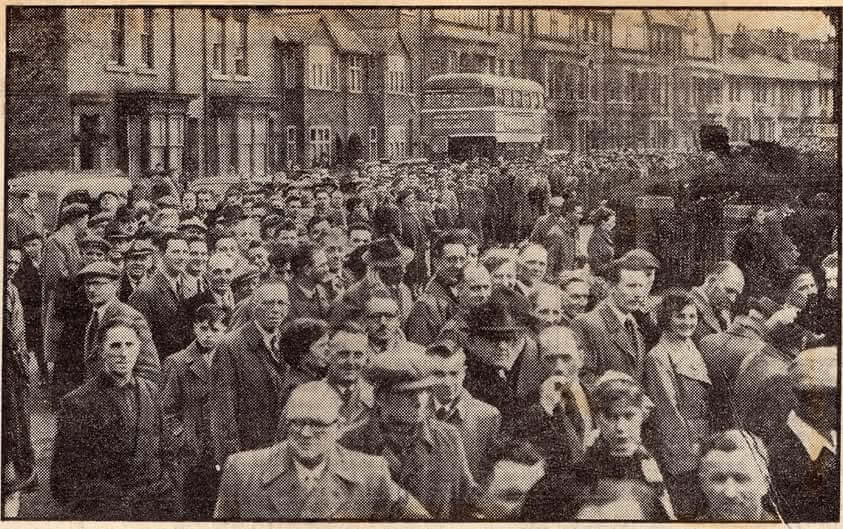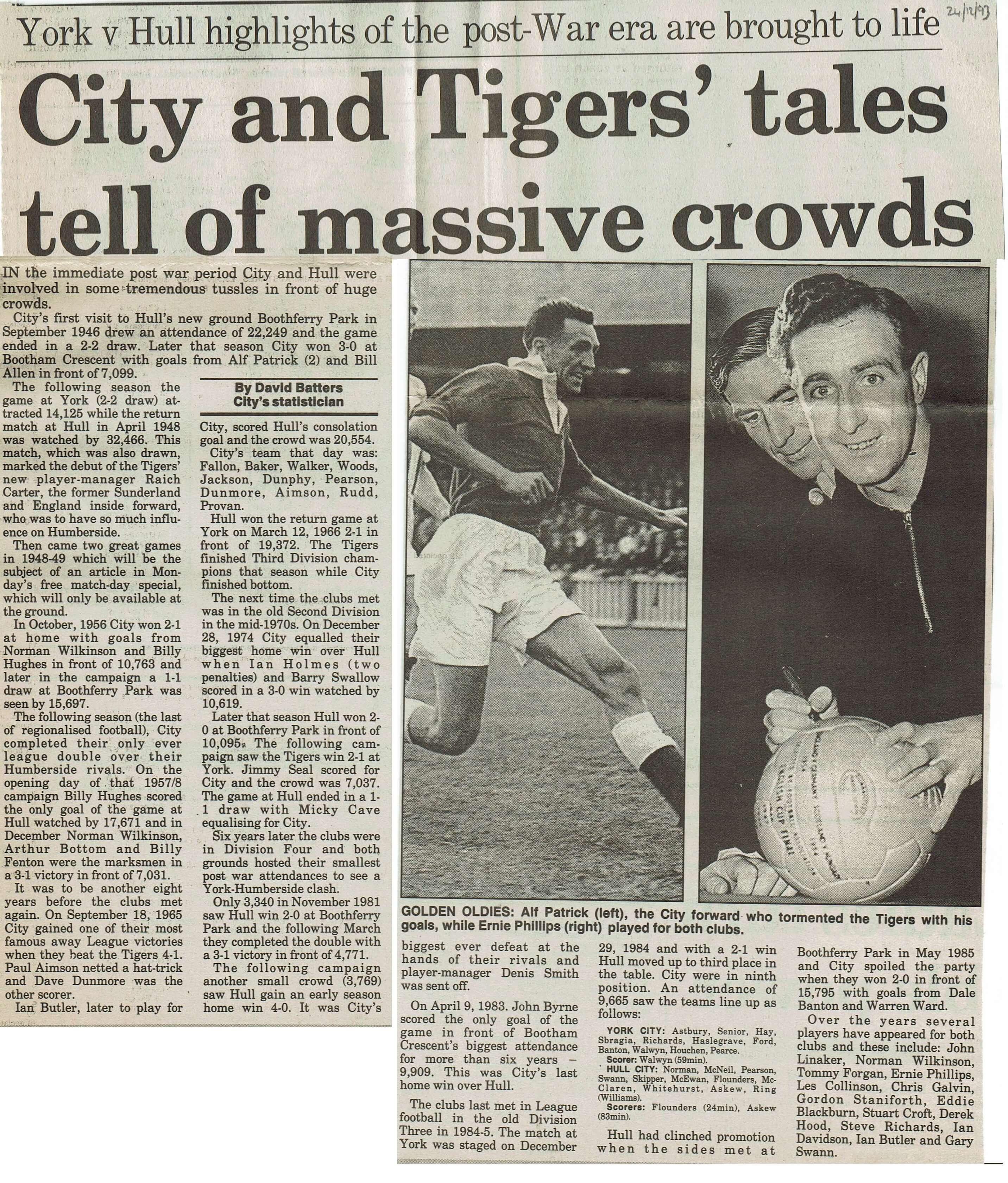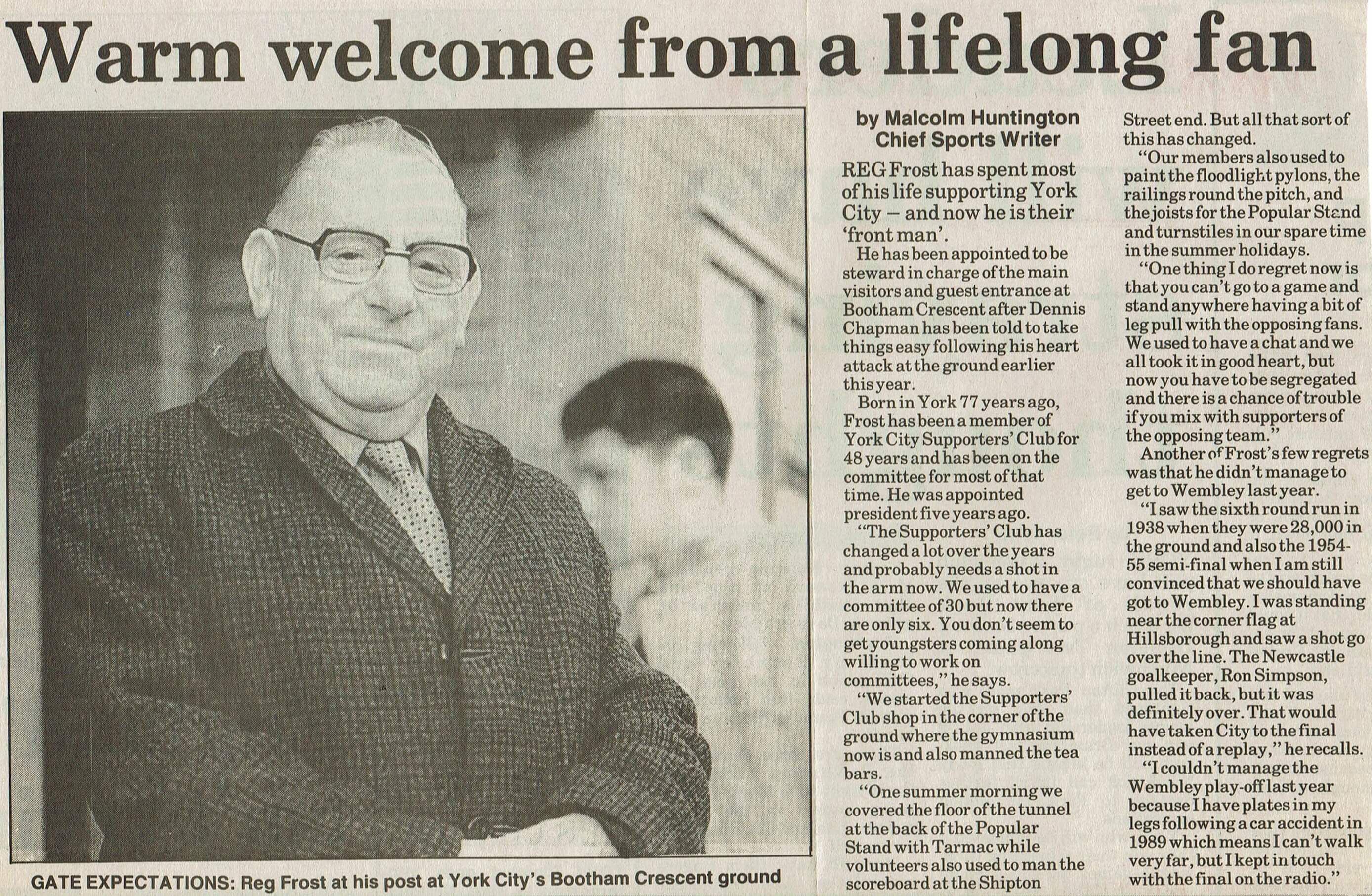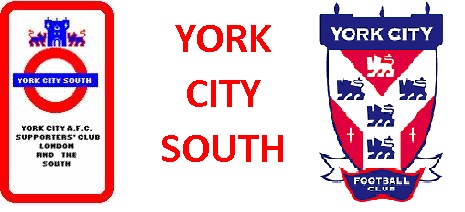

York City - 1922 - 1958: The Early Years
BC: Before City
York was one of the later places to take to football; rugby had already been established for over 45 years before York City were formed in 1922. An earlier York City floundered during the early years of The Great War.
In the late 1890s and early 1900s York was a rugby stronghold. York Football Club can be dated back to a formation in 1868, playing football and rugby union, they had a nomadic existence for a few years before finding a home ground on the Knavesmire. In 1898, they joined the ”Northern Union” and turning their attentions towards rugby league.
Around the same time, local football started to be played and in 1897 the York & District League was formed with 10 clubs. Three years later, the York & District Football Association was formed and cup competitions were organised along with other leagues for junior and school teams. Elsewhere, The Football Association had been formed in 1863 and the FA Cup started in 1871. The 12 team Football League was formed in 1888. By 1909, The Football league consisted of 2 divisions and 40 clubs. They included 7 clubs based in Yorkshire plus the likes of Chesterfield, Grimsby, Lincoln and Gainsborough.e
Back in York, by 1908 interest was so high that demands for a team to represent the City grew and an amateur team was formed and entered the Northern League playing at a ground off Holgate Road. As most of the sides were in the North East travelling became a problem and two years later York joined the Yorkshire Combination which allowed one player per team to be paid and a man named Corrighan became York's first professional. Ambitions continued to grow and in 1912 a professional club was formed and a piece of land was bought in Burton Stone Lane which became known as Field View. An application was made to join the Midland League which was accepted and the first match was against Midland League champions Rotherham Town and attracted around 5,000 paying spectators. The club had three seasons before the outbreak of World War 1 when the League was suspended. The club could not survive and was disbanded in 1917.
After WW1, local football continued to thrive and York F.A. Senior Cup Final attracted a good attendance, and the standard was so good that three local sides joined the newly formed Yorkshire League which had the reserve teams of senior professional clubs playing in it.
As with many clubs, York City’s origins are to be found in local businesses and local supporters, effectively founded by local people, for local people. However, York, was never quite an industrial town and was surrounded by farm land and landed gentry. It didn’t have the same structure and heavy industry as say Manchester or any of the West and South Yorkshire towns. The only heavy industry in York was the nationalised railway works, rather than privately owned manufacturing conglomerates to be found elsewhere. The key industries were confectionery and tourism, the Quaker Rowntree family and the equally philanthropic Terry family had little time for sport.
Even in 1987, when the Shipton Street Roof Appeal was founded, despite several prominent figures in the appeal having long careers at Rowntrees and many long-standing employees, including some senior management, at Rowntree being regular York City supporters, no sponsorship or donations were forthcoming in an era where football didn’t yet have the same positive reputation it was to develop a few years later.
As the standard of football in York improved, demand grew to form another professional representative side for the City. On 31st March 1922 a public meeting took place in the Guildhall at which around 400 enthusiasts attended. A committee of 20 was formed including many local businessmen and at a further meeting on 4th April a resolution was passed to progress the formation of a new York City football club. On the 6th May 1922 at a meeting held at the Co-Operative Hall the York City Association Football and Athletic Club Ltd. was formed with five directors elected, later 2 more were added.
At this stage the club had no players and no ground to play at, but a hopeful application to join the Football League was made and only received one vote with Halifax and Rochdale being re-elected. The Football League committee told York City "to go back home, fully establish the club, work a bit and come back another day". Two weeks later York City applied and were accepted into the Midland League, but it was a close call, getting the sixth and final vacancy. Then the task of signing players began with a mixture of seasoned pros and local players who had played for the old club at Field View.
The problem of where the club were going to play had to be tackled, but before they could do that the finances had to be sorted out and it was decided to issue 4,000 shares of £1 each. Due to the introduction of a weekly instalments scheme many supporters became shareholders and this desire for the club to succeed was largely due to the working man, some clubbed together to part own a share. Shares were available to anyone to purchase, payment was by instalment. Directors had to buy at least £5 worth of shares. Given the times, share sales were slow. Only £1,260 of shares had been purchased within the first year. It was to be a few years before the shares were fully subscribed.
A ground in Heslington Lane called Fulfordgate was obtained after the minimum capital was raised.
1922: Formation
The first match for the new club was Notts County Reserves away on the 6th September, 1922 which City lost 4-2 after putting up a good display. York City's first ever goal was scored by club captain, ex Hull City player, Billy Smith from a free kick. They played in maroon and white striped shirts and white shorts. The new ground at Fulfordgate was not ready for the first home match three days later and had to be played at Mille Crux the home of Rowntrees. York won this game against Lincoln City Reserves 3-2 with gate receipts totalling £122 from an estimated 4,000 crowd. Delays in building the ground meant City's first 2 home league games were played at Rowntrees' Mille Crux ground. The first match at Fulfordgate was played on 20th September, 1922 a 4-1 win over Mansfield Town.
At the end of their first season, City finished fourth from the bottom winning 11 and drawing 12 of the 42 games.
In the early years finances were tight. The original share issue of 4,000 £1 shares was slow to take off. A "Shilling Club" was formed to help supporters club together to buy a share whilst supporters' wives knitted the socks for the team. During the 1926/7 season, the Supporters Club took up a "£1,000 and the Third Division" challenge, neither target was achieved, but a good sum was raised and in early 1927 a Supporters Club refreshment hut open inside the ground.
The club was now up and running, and in 1929 at the fourth attempt, City were elected into the Football League before moving to Bootham Crescent in 1932, where they soon had great success in the FA Cup.
City enjoyed 7 seasons in the Midland League in those non league days before election to Division 3 (North) in 1929. City never achieved a finish higher than comfortable mid table but in those early years did see a cup reputation built. As a non league side, City won 5 ties in 1926 to reach Round 2. See the 1922-9 non league playing record. Promotion to the Football League saw another push to sell shares, again take up was slow, maybe hardly surprising given the tough times and lack of any dividend payment.
Much of this early years information is sourced from Richard Snowball's "Sporting Memoirs" works that is on display at the LNER Community Stadium.
1929: The Football League and Early FA Cup Glory
City's first season as a League club saw City draw away to top flight Newcastle in Round 3 of the FA Cup only to lose the home replay. City suffered a similar fate a season later, losing a Round 3 replay to top flight Sheffield United. City's cup reputation was growing.
By 1932, Fulfordgate was deemed not fit for purpose. City moved to Bootham Crescent, its city centre location being deemed more suitable than the spacious out of town Fulfordgate. The ground was built in under 4 months and opened in August 1932.
In 1935, Derby were the first top flight team to visit Bootham Crescent. They beat City 1-0. In 1937, we reached Round 4 for the first time. In Round 3, we beat Bradford City 1-0 before losing a Round 4 home replay to Swansea. The first game was memorable for City deciding to cancel their overnight train journey home in favour of staying in a Swansea hotel to help their recovery from the gruelling game. Heavy rain fell throughout turning the snow covered pitch into a heavily puddled quagmire making it impossible to play football on the ground with the heavy leather ball of the day.
Along the way, our league from had been very mid table, once flirting with re-election whilst our first season in the league saw us claim our pre war best finish of 6th place. In 1937/8, after a good start, a poor October set us back. With cup games leading to the cancellation of league matches, we were still on the fringes of the promotion race when our cup campaign ended on March 9th. However, 10 games in the last 5 weeks of the season ended with 5 defeats and an 11th place finish. That season, Reg Baines, a bustling centre forward, in his 3rd spell with the club, top scored with 28 goals whist a strong defence also played its part.
1938 saw an FA Cup quarter final against Huddersfield, watched by an all time ground record crowd of 28,123. It was the fourth consecutive round in which a new ground record had been set. City suffered a narrow 2-1 defeat in the replay. Although not quite the power house they’d been in the 1920s, when Huddersfield were England league champions in 3 successive seasons, since, they’d still had an FA Cup success and 3 Division 1 runners up finishes. Honours were even at Bootham Crescent, City forced 4 late corners whilst Ted Wass cleared off our line as defences came out on top in a goal less draw. The 28,123 who saw the game is an all-time record. For someone who can remember being tightly squeezed in 15,000 plus crowds in the 1970s, I can only imagine how much more tightly packed that crowd must have been. Good job there was no health and safety in those days. Across York and throughout the nation, people gathered around wirelesses for the semi final draw. City or Huddersfield being paired with Sunderland.
For the replay, press reports speak about people abandoning their vehicles (I didn’t realise the private car was so popular in those days!) and walking several miles to the ground. Two closely matched teams fought out another tough game, The Terriers taking the lead in the 58th minutes and going 2-1 up 10 minutes later. On the day, they probably deserved their win, but once again York City had caught the imagination of the whole footballing world. Our cup run was unique, to this date we are the only team to have played at home in 6 rounds of the FA Cup in one season.
Our reward? A tour of Holland in October 1938, losing 8-2 to a Dutch National XI and in 1938/9 exemption from The FA Cup until Round 3 when we lost 5-0 at home to Millwall.
The 1937/8 FA Cup run had seen us overcome Halifax at The Shay in a replay before Round 2 saw City travel to London for the very first time. 2 goals in the last 15 minutes earned us a replay with Clapton Orient. The replay went ahead after at Bootham Crescent on a heavily sanded pitch City won a hard fought game 1-0.
Coventry, league leader of Division 2 (one above City) were the Round 3 visitors. Apparently both teams went together to the second show at The Theatre Royal on the eve of the game. City lead 3-1 at half time. In the second half, we winger Sam Earl, carried off unconscious on a stretcher (no subs those days) and had defender Ted Wass play the last 5 minutes with blood pouring from a head wound as City held out for a 3-2 win. The 13,917 crowd was a new ground record.
Another Midlands club, WBA, were our visitors in Round 4. FA Cup winners, 3 times previous including 1931 and 1935 finalists were a big draw. Again, both teams went to the theatre on the eve of the game. Whether it was superstition or not, the result was the same, a 3-2 win for City with a new record crowd of 18,795 seeing an exciting game. At 13p for the best seats in the ground, they certainly had value for money. City went behind, had 2 strong penalty appeals turned down (even then Division 1 clubs seem to have had the backing of the referee). Twice City came from a goal behind, 2 goals in the last 6 minutes gave City a narrow win (ironically Coventry’s appeals for a hand ball in the build up to the winner were ignored by the referee).
Middlesbrough, another top flight side, who were to finish 5th that season, were Round 5 visitors. Keen to cash in on the cup run, City increased ticket prices, the top price being 38p. There wasn’t much protest as they were all sold out in 90 minutes. Over 1,000 of tons of stone and soil were deposited behind the goals to increase ground capacity. A new record crowd of 23,860 saw City's "Cathedral Boys" beat Boro 1-0. Kicking into a strong wind, City had to defend stoutly but Boro struggled to convert possession and territory into shots on target. A Peter Spooner header was the difference between the sides. The £50 City had paid Sheffield United for Spooner being the only transfer fee paid for any player in our cup side. Photos from the game show City fans spilling over onto the cinder track that runs around the pitch, almost encroaching onto the pitch in front of The Popular Stand.
28,123 saw City hold Huddersfield to a 0-0 draw in Round 6 (quarter final) before going out in the replay. That crowd was the all time record attendance at Bootham Crescent, the 4th consecutive round in which a ground record had been set.
Post WW2: More FA Cup Glory
Football continued during the war years on a regional basis, with clubs being able to field anyone who was locally based, in City’s case, many high profile players turned out, those based in the army camps and airfields of Yorkshire.
Post war, attendances soared across England, City saw average attendances topping 10,000 (10,409) for the first time in 1948/49, with two of the three highest ever league attendances at Bootham Crescent recorded that season, 21,010 against Hull City in April 1949 and 19,216 against Rotherham United in November 1948. The Rotherham game saw Alf Patrick score 5 goals, the only ever City player achieve that feat in a Football League game.
1948 was a landmark year in City's history. The freehold of Boothanm Crescent was bought and saw some improvement to the ground, including additional concrete terracing being added. A celebration dinner was held at the Station Hotel.
The next big run was 1955 when City held the mighty (at the time) Newcastle to a semi-final draw and narrowly went down in the replay, hampered by being reduced to 10 players through injury in the days before substitutes were allowed. Along the way City disposed of Blackpool, featuring the legendary duo of Matthews and Mortensen and overcame Spurs 3-1 in one of Bootham Crescent's most celebrated afternoons in February 1955 in front of a sell out 21,000 crowd. A similar number made their way to Sheffield for the first semi final and another 12,000 for the midweek replay at Sunderland. Between them, the 13 City players involved in that cup run team racked up 3,409 appearances for the club during their careers and scored 509 goals.
In the league, City held steady, rarely threatening promotion. 1954/5 being the best season, but a fixture backlog caused by the cup run saw City's promotion challenge peter out in late April. That season saw an average home league crowd of 10,291, the second and final season in which a 5 figure average was achieved. Come 1958 and the end of regional football, City's 13th place confined them to be founder members of Division 4.
Those early days were marked by financial prudence, the club living within its means, despite generally running a small overdraft. The post war boom saw a surge in attendances and consequently a profitable period for City, allowing the club to buy Bootham Crescent and then the 1955 FA Cup run further adding to the coffers and allowing the Main Stand to have its fourth section added.
Equally, the suppporters played a huge role in the City's fortunes. From the 1920s when Supporters' Club members' wifes knitted socks for the players when money was tight, through the 1930s when much of the labour required to build Bootham Crescent was provided free of charge from SC members and into the 1950s when the SC set up its Auxilary Branch dedicated to fund raising in 1954. By January 1956, it had 12,000 members, at a time when the Supporters Club had 4,000 members and Social Club over 1,000 members, many being members of more than one organisation. By 1962, the Auxilary Branch had raised £86,000 and at its peak had 1,500 members and was raising £1,000 a month. Later, it was able to offer new cars and holidays (London, Rotterdam and Paris) as prizes.
Memory Match
In the latest of his Memory Match series, Darlington fan Simon Weatherill looks back to Darlington's away game at York City on 26th February 1949.
The late 1940s were a boom time for professional football in England. Attendances reached record levels in the 1947/48 season, these record figures were smashed again the following year. 1948/49 still holds the record for the biggest attendance figures ever. Over five million people watched Division 3 North games over the course of the season, at an average of 10,833 per game!
Darlington began the 48/49 season in fine style with four straight victories to take them to the top of the table. They opened with two home wins, 3-0 v Accrington Stanley and 2-0 v Hartlepools. Then they followed that up with two away wins at Rochdale (4-3) and then the return fixture at Hartlepools (1-0). Albert Quinn, a new signing from Sunderland, scored 5 goals in those opening 4 games. Not a bad start to his Darlington career.
The good form continued and the Quakers remained towards the top of the table although by February, Hull City and Rotherham had started to pull away at the top and a gap had developed to the rest of the division.
As Darlington prepared for their away game at York City on February 26th, they sat in third place in the league with 35 points from 29 games. Rotherham were top with 42 from 28 and Hull sat second with 40 from 25. York sat just behind the Quakers, in 7th place with 30 points from 28 games (two points for a win in those days).
Darlington had beaten Crewe 4-1 at Feethams on the previous Saturday and so named an unchanged eleven to face York. The Minstermen had also won their previous game, 3-2 at Hartlepools but were forced into one change. Right half Ron Spence had an ankle injury and was replaced by Bert Brenen.
A crowd of 10,586 (paying receipts of £720) crammed into Bootham Crescent to see the game kick off in bright sunshine.
York started with a blustery wind behind them but it was Darlington, playing with short, accurate passing who looked the more dangerous and were first to threaten. Right winger Jim Turney cleverly beat two defenders and played in a dangerous cross but none of his team mates were there to meet it. Alf Patrick then headed just wide of the Darlington goal from a George Ivey cross, but the Quakers broke away and took the lead in the 12th minute. Tom Varty played in Albert Quinn down the left wing and he made his way to the by-line before pulling the ball back to Jim Turney who scored with a clever header. A couple of minutes later Turney went close again with another good effort but this time he was just too high. Darlington kept up the pressure and on 15 minutes they increased their lead. Quinn was the provider again, this time collecting the ball from Tommy Ward before crossing to the far post where the ball was met by Ken Bower who drove it into the net.
Two minutes later York were back in the game with a goal of their own. They were awarded a free kick for handball and Brenen swung it into the goalmouth where after a brief scramble it was stabbed home by Alf Patrick. Using the strong wind to their advantage York began to exert some pressure. They had three corners in quick succession, then Dunn was forced into a superb save from Tom Hindle. Dunn was quickly called into action again when he saved at close range from Ivey, then just before half time York came close to an equaliser when Alf Patrick headed just over after a cross by Sid Storey.
Half time: York City 1 Darlington 2.
The second half started with end to end football and both sides having chances. Matt Patrick made a good run for the home side, in which he beat two men but then he was stopped by Ernie Price, who cleared his lines well. Turney and Bower then threatened for the Quakers but they were stopped by home full back John Simpson. In a breakaway, Alf Patrick shot just wide of the Darlington post then at the other end Varty hesitated when well placed in the York area and allowed Simpson to intercept. In the 65th minute the Quakers increased their lead with a superb goal by Quinn. Ward had possession on the right and played a high cross into the goalmouth. Home centre half Tom Gale failed to clear, and the ball fell to Quinn with his back to goal. He swivelled around on his right foot and lashed the ball home with his left. On 77 minutes Darlington scored a fourth goal after Simpson had handled in the box. Quinn firing home the penalty. Three minutes later it was five, as Ward fired a terrific shot towards goal, that was punched away by home keeper Matt Middleton, but the ball fell to Bower who steered it back past him into the net. York threw men forward in the closing stages and were rewarded with a consolation goal when Matt Patrick fired home in the 82nd minute to make the final score: York City 2 Darlington 5.
The win kept the Quakers in third place, and they continued to have a good season. They eventually finished in fourth place with 46 points, 4 points behind Doncaster Rovers in third, but both sides were well adrift of Hull and Rotherham. City's form tailed off, losing their final 5 games to finish 14th.
Hull eventually winning the one and only promotion spot with 65 points. The 48/49 season proved to be the best ever season for attendances at Feethams. The record attendance for a Division 3N game at the ground was broken three times. On October 9th, 14,590 saw a 2-0 victory over Rotherham. Then on October 23rd, 15,326 saw a 1-5 defeat by Doncaster, and on March 12th the record was broken again when 17,978 saw a narrow 0-1 home defeat by eventual champions Hull City. The average Darlington home gate for the season was an amazing 10,235.
York City produced an 8 page programme priced at 2d. Mostly adverts, with very little reading material, the team line-ups are on the centre pages.
York: Jeff Pears, Harry Brigham, John Simpson, Bert Brenen, Tommy Gale, Billy Allen, Matt Patrick, Tom Hindle, Alf Patrick, Sid Storey, George Ivey.
Darlington: Billy Dunn, Roy Brown, Joe Davison, Ernie Price, Tom Kelly, Wilf Parsley, Jim Turney, Tommy Ward, Ken Bower, Albert Quinn, Tom Varty.
